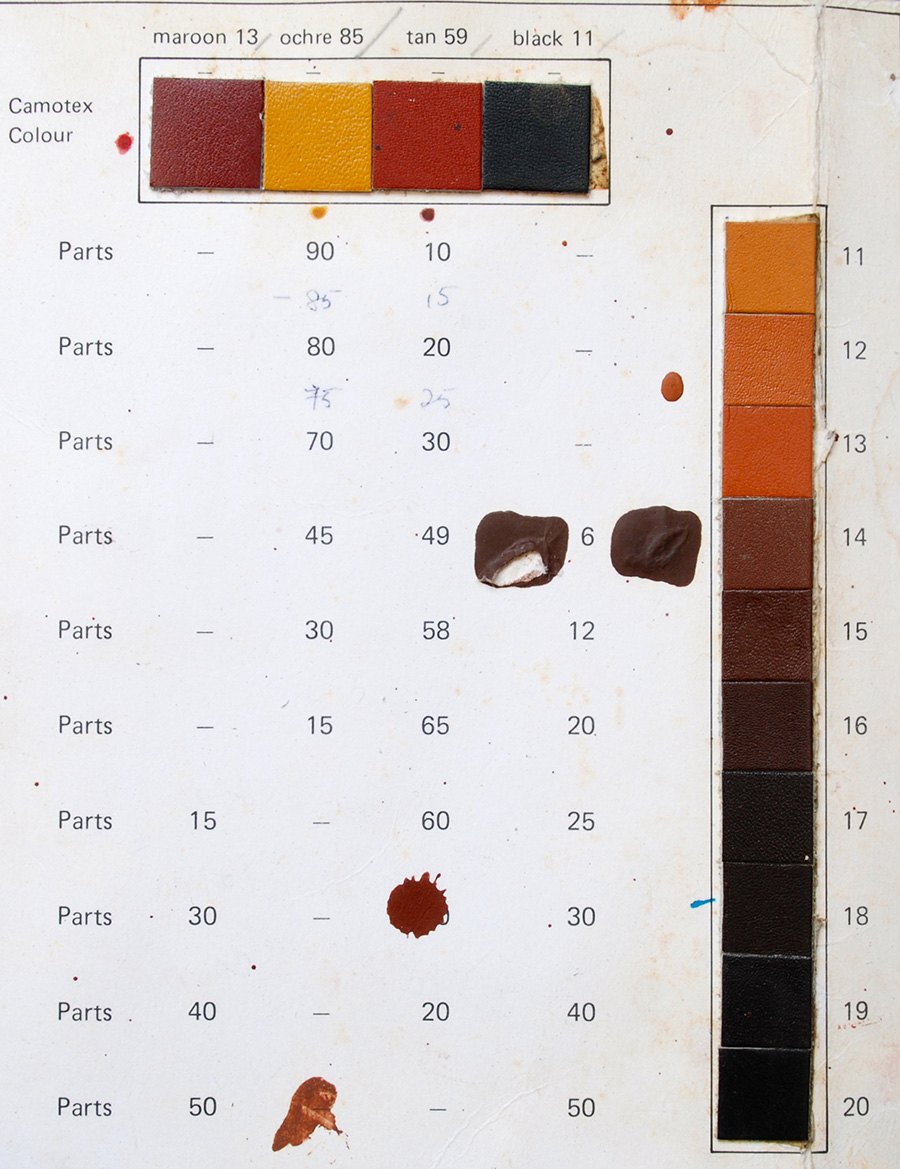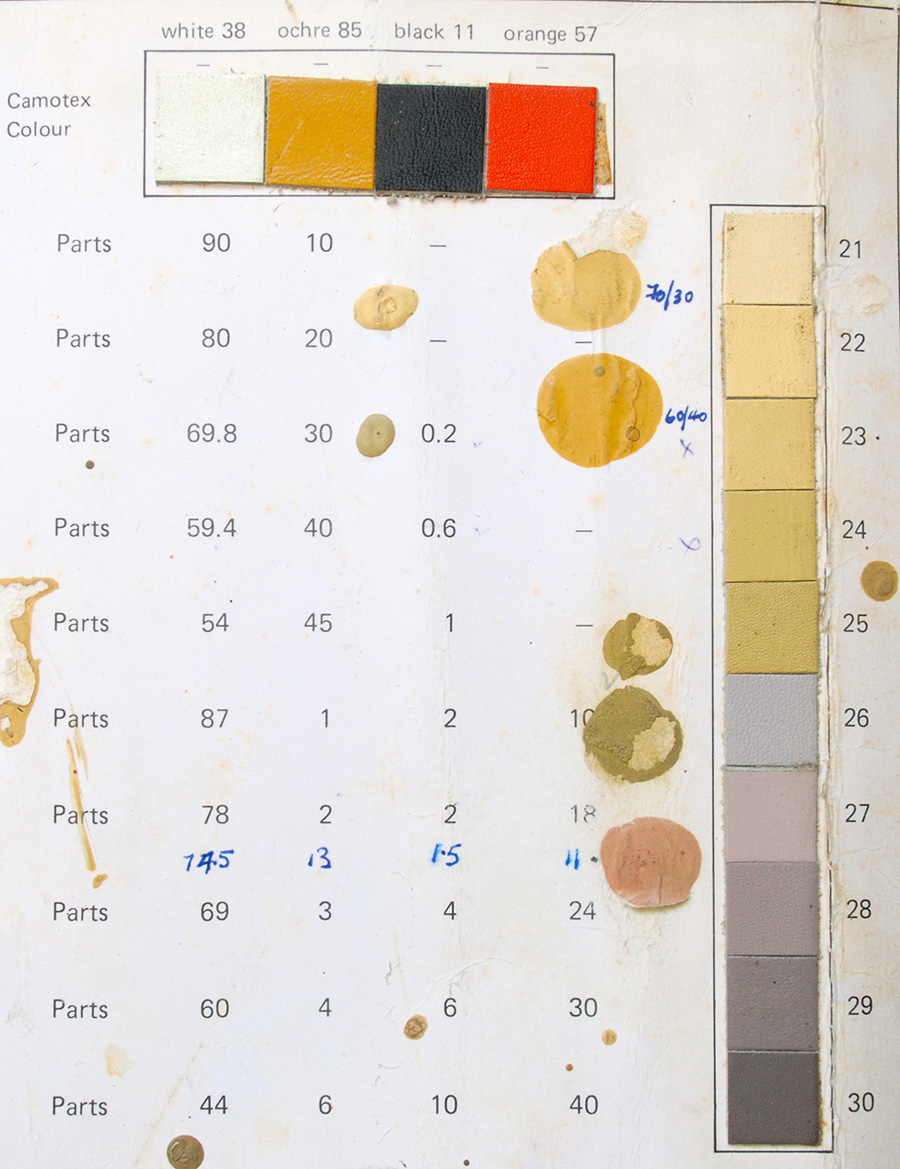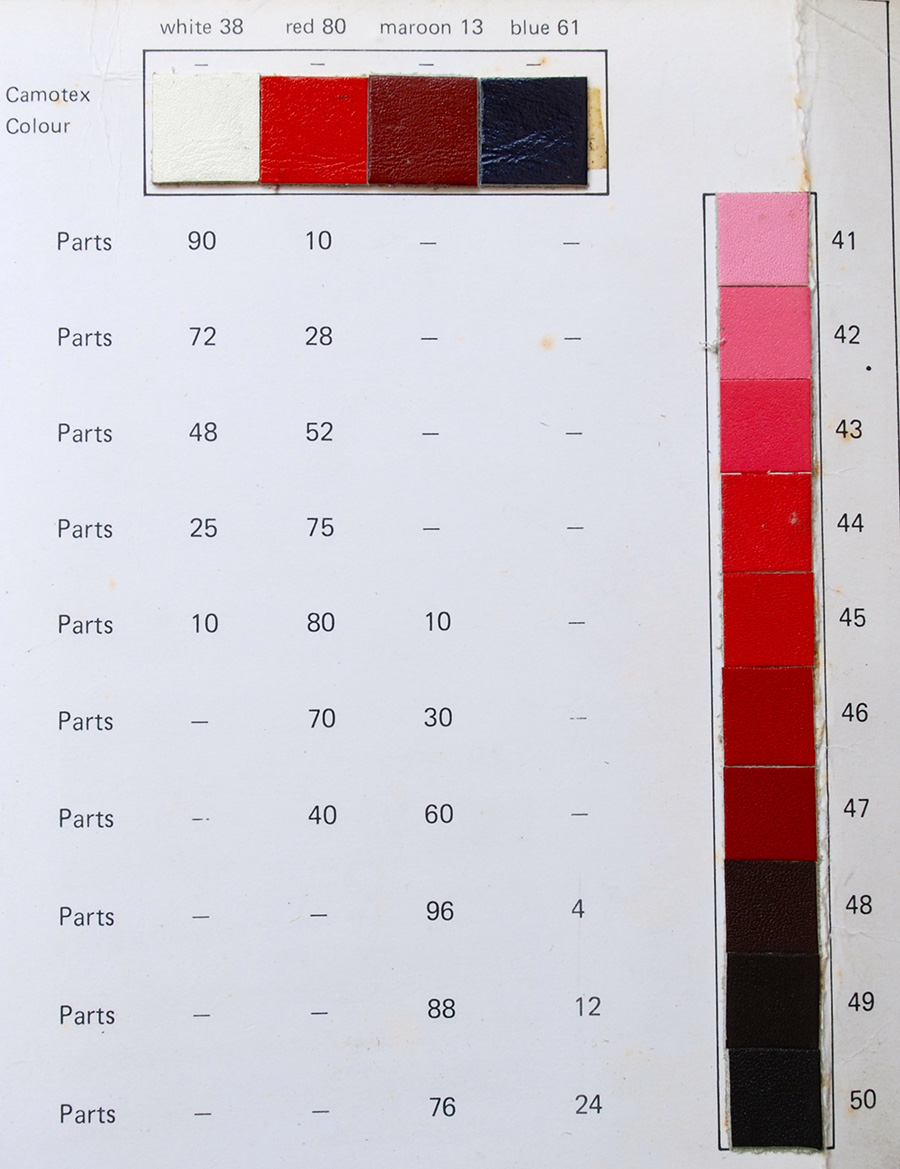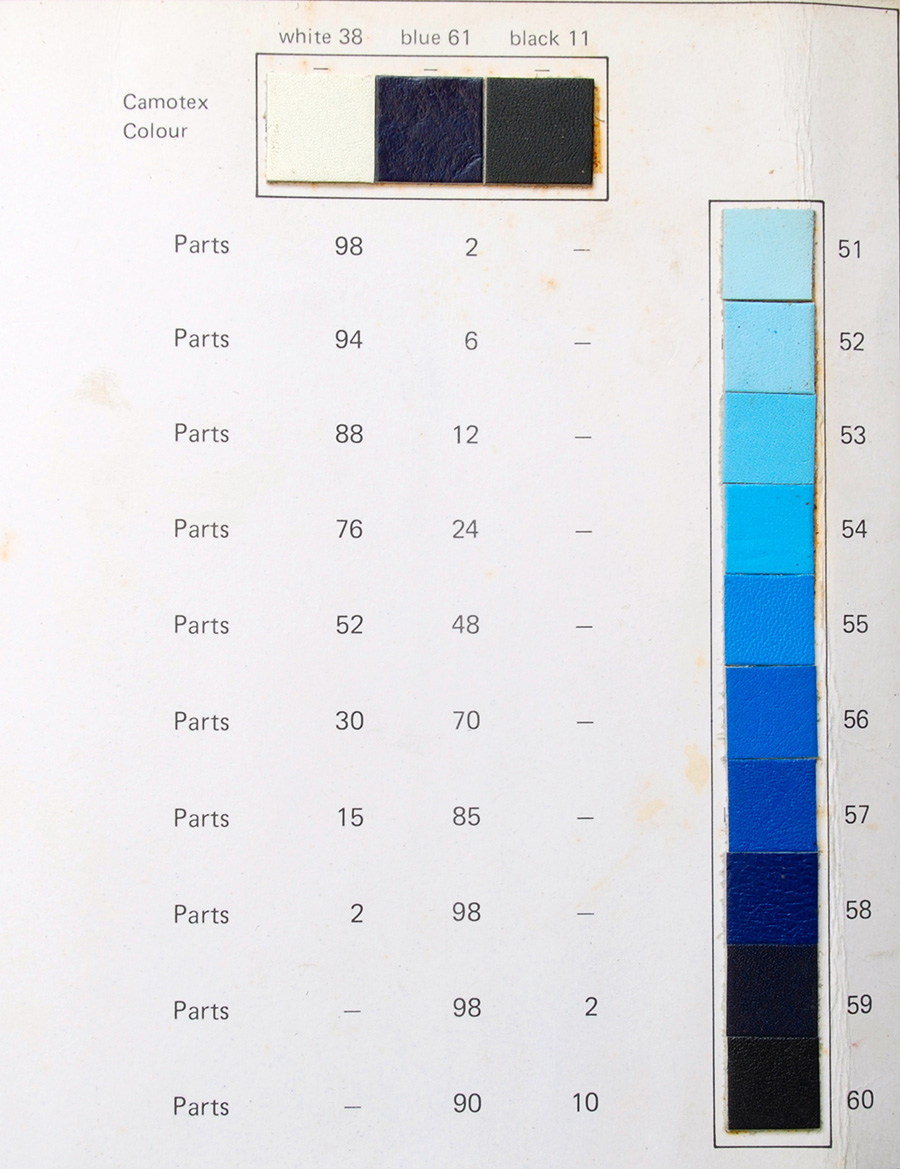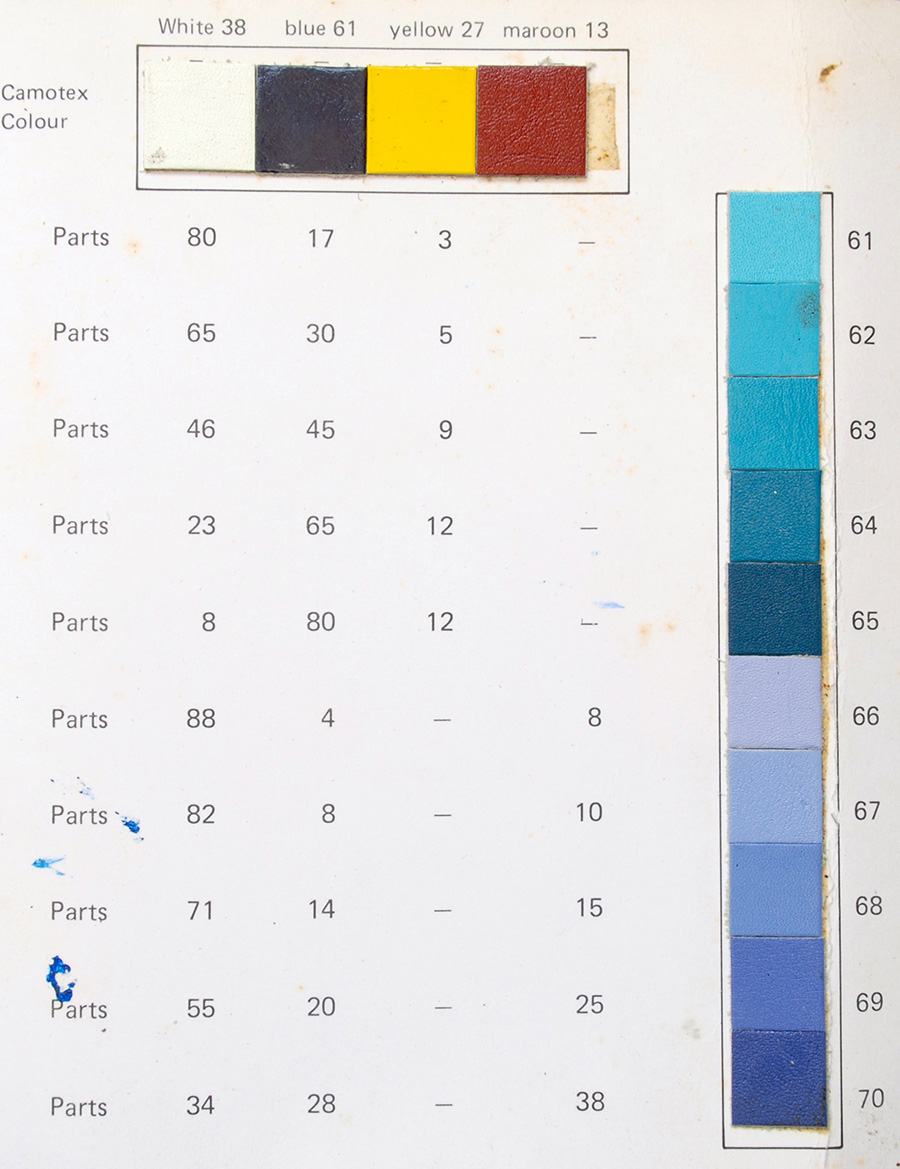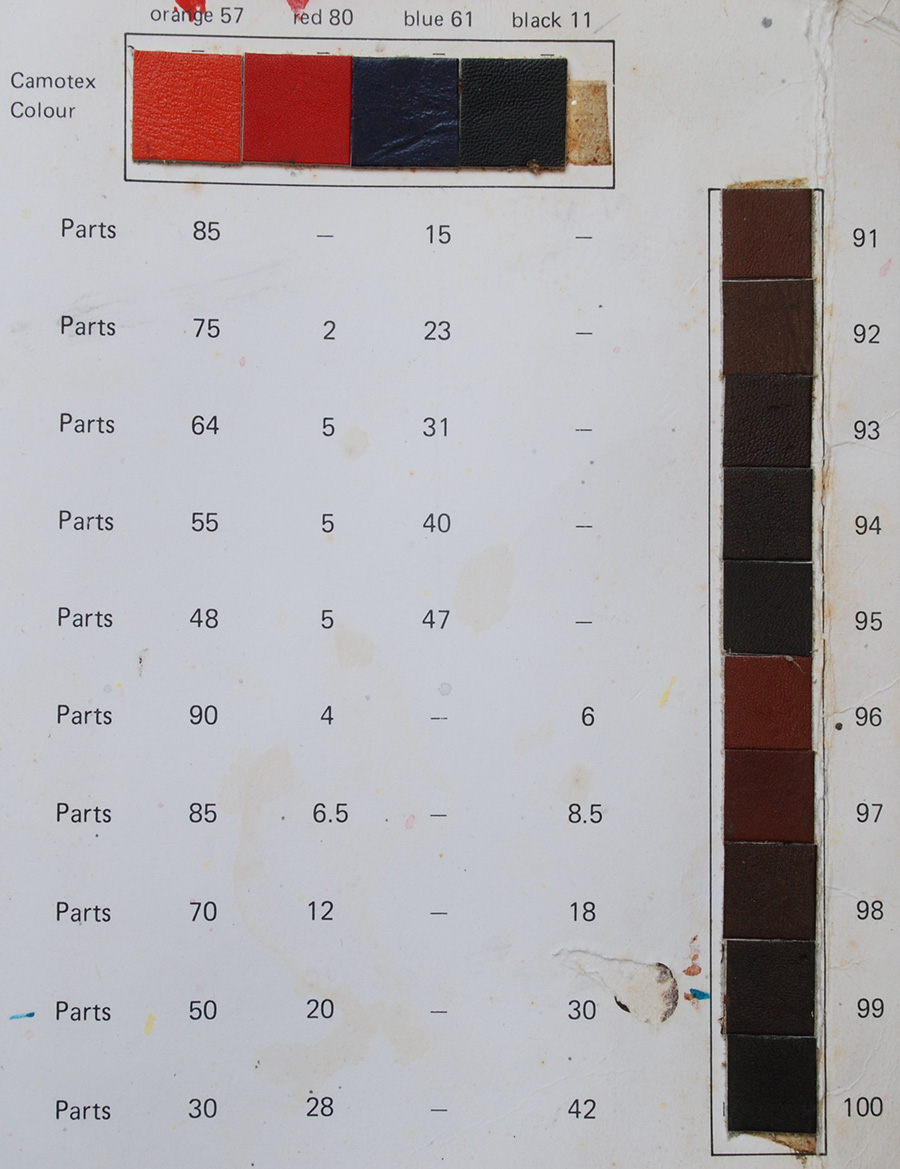Product Overview
Leather Color Refinishing Kit SA7.cl by Leather Doctor degreases, rinses, hydrates, softens, adhesion coats, color coats, top coats, and protects leather.
Additional individual color for matching is available as https://leatherdoctor.com/leather-paint-micro-54/
People Also Ask:
1: Why Leather Color Refinishing?
2: What is a Holistic Leather Color Refinishing System?
3: How to Strip Existing Deteriorating Finishes?
4: How to Degrease?
5: How to Rinse and pH Balance?
6: How to Rinse Penetrated Body Soiling by Reverse Transfer?
7: How to Relax Stiff Leather?
8: How to Fatliquor?
9: How to Remove Fatliquor 5.0 Sticky Residue?
10: How to Dry Prep?
11: How to Repair?
12: How to Adhesion Coat?
13: How to Color Coat?
14: How to Topcoat?
15: How to Apply Protector?
16: How to Color Match?
1: Why Leather Color Refinishing?
1.1: Most color repairs may range from peeling, and missing finishes to abrading damages.
1.2: Some exposed areas may be contaminated with foreign soiling including conditioners, protectors, body oil, grease, sweat, or alkaline overexposure from harmful cleaners.
1.3: A comprehensive long-term lasting repair solution will require a holistic approach to deal with the exposed structure and surface finishes.
1.4: The practical softness and functional strength of the leather's average thickness between 0.9 to 1.2mm determine its usefulness from stiffness to cracking.
1.5: The aesthetic aspect of the leather finishes averages 0.02mm (or 20 microns) in thickness for practical compressing and flexing to reduce cracking.
2: What is a Holistic Leather Color Refinishing System?
2.1: A holistic leather color refinishing system works in a progressive sequence dovetailing to the desired result with these 7 steps:
2.2: 1st Step - Stripping:
2.3: Stripping of deteriorating finishes to even the overall appearance with Stripper 2.3 and rinse with Rinse 3.0 is the first step, otherwise, skip to degreasing.
2.4: 2nd Step - Degreasing:
2.5: Degreasing with Degreaser 2.2 followed by Acidifier 2.0 is mandatory to remove accumulated oily, greasy, sweaty soiling, and aging conditioners for an overall even appearance.
2.6: 3rd Step - Hydrating and Fatliquoring:
2.7: Hydrator 3.3 followed by Fatliquor 5.0 rejuvenates leather for its renewed softness and strength.
2.8: 4th Step - Adhesion Coating:
2.9: Adhesor 73 is a compact primer resin that ensures proper smoothing, sealing, and promotion of adhesion to the leather before color coating.
2.10: 5th Step - Color Coating:
2.11: Micro 54 is a fine micro pigment water-based compact resin blend with high UV fade resistance to provide the desired color.
2.12: 6th Step - Top Coating:
2.13: Topcoat 54 seals Micro 54 has excellent flow, and forms a flexible, tough film in gloss, satin, or matte.
2.14: 7th Step - Protection:
Protector B is a non-stick, rub-resistant protection conditioner that cuts friction noise and imparts a soft buttery feel on smooth leather. Protector B Plus is the leather scent version.
3: How to Strip Existing Deteriorating Finishes?
3.1: Stripper 2.3 is applied and unwanted finishes are removed with tools like Strip Brush 9, Eraser 4, Razor 60, sandpaper feathering out seamlessly, and towel extract for an even appearance.
4: How to Degrease?
4.1: Degreaser 2.2 is swirled for up to 5 minutes for the separation to build up above 75% of coagulation, then given a vigorous shake to gel for ease of application.
4. 2: Degreaser 2.2 is transferred to leather Brush 1 or Eraser 4; agitate to saturate the body stain, and feather out to the entire section.
4. 3: Suspended soiling is towel extracted until the towel shows clean.
5: How to Rinse and pH Balance?
5.1: Acidifier 2.0 is applied, brushed, and suspended soiling is rinsed with towel extraction until the towel shows clean to a healthy squeak.
5.2: Existing brightening streaks, or tackiness if any, are pH balanced with a dwelling soak and brushing to remove suspended foreign contamination to a healthy squeak with finger testing.
6: How to Rinse Penetrated Body Soiling by Reverse Transfer?
6.1: Hydrator 3.3 is applied saturating the stain area and feathering out for an even appearance.
6. 2: Hydrator 3.3 soaked Towel 5 is placed over the stain area without airspace to trap suspended soiling particulates instead of remaining on the leather surface as it dries.
6. 3: Towel 5 when crispy dry is peeled off and Eraser 4 is used to erase surface residue before fatliquoring.
7: How to Relax Stiff Leather?
7. 1: Hydrator 3.3 is applied and brushed to the entire panel for a darkening appearance without a drying edge.
7. 2: Hydrator 3.3 relaxing effect is further worked out with stretching and massaging to eliminate leather stiffness to satisfaction.
7.3: A towel extraction follows until the towel is clean and ready for immediate fatliquoring.
8: How to Fatliquor?
8. 1: Fatliquor 5.0 is applied to the entire panel with a darkening appearance without a drying edge.
8. 2: Fatliquor 5.0 application is repeated each time the water contents evaporate until fully saturated.
8. 3: Fatliquored leather is left to a slow natural drying.
9: How to Remove Fatliquor 5.0 Sticky Residue?
9.1: Hydrator 3.3 is applied to the sticky surface and brushed with Brush 1 driving the remaining surface remnants free of milky fat and oil until it turns clear.
9.2: The non-sticky surface is given a final towel wipe and is left to dry again for natural drying.
9. 3: The almost dry leather is given a stretching or massaging until dry for an extra softness.
10: How to Dry Prep?
10.1: Dry prep is the preparation with various tools like a tablespoon to stretch out any darkening effect, Eraser 4 to erase surface wick-up residue, and sanding to smooth deteriorating finishes.
11: How to Repair?
11.1: Refer to Leather Repair Kit A7.r for the various types of repair accordingly.
12: How to Adhesion Coat?
12. 1: Adhesor 73 is scrubbed with a 3M white pad to remove some deteriorating finishes and lint-free towel extract until the towel shows clean to promote an even adhesion coating for further coating.
13: How to Color Coat?
13.1: Micro 54 concentrate has to be mixed with distilled water before application.
13.2: The mixing ratio may vary from a ratio mix of 1: 0.5 to 1 with less distilled water to retain its viscosity to control streaking on a vertical panel when coating by airbrushing.
13.3: First coating is recommended with padding using folding Towel 5 to rub in for better surface bonding and subsequent coating with soft varnishing brush to reduce streaking or airbrushing to produce professional results.
13.4: Fine dry atomize dispersion with more air is achieved with 80 to 100psi of air pressure.
13.5: Recommend a light spray for easy blow dry in-between coating building up the color in the process.
14: How to Topcoat?
14. 1: Topcoat 54 is applied by a soft varnishing brush to reduce marks and streaks or airbrushing for professional results.
14. 2: Use a lint-free paper towel to blot out any drips or streaks.
14. 3: Speed dries between coats with the help of a hair dryer.
14. 4: 2000-grit sanding may be applied to improve touch and appearance.
15: How to Apply Protector?
15. 1: Protector B is applied and redistributed with a foam brush or lint-free white towel and ready for use when dry.
16: How to Color Match?
16.1: Color matching is created from the basic color in parts based on weight from these examples.

